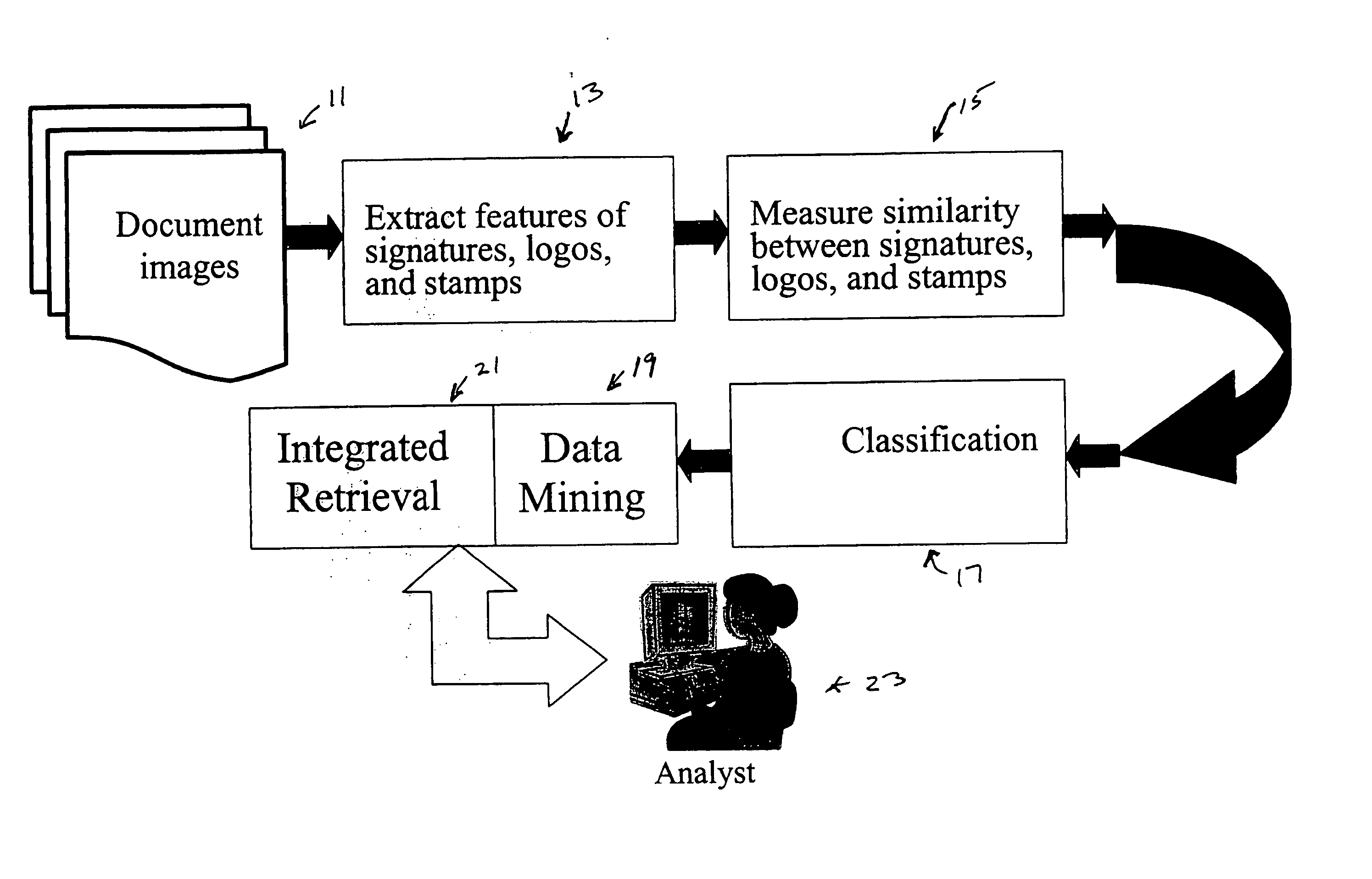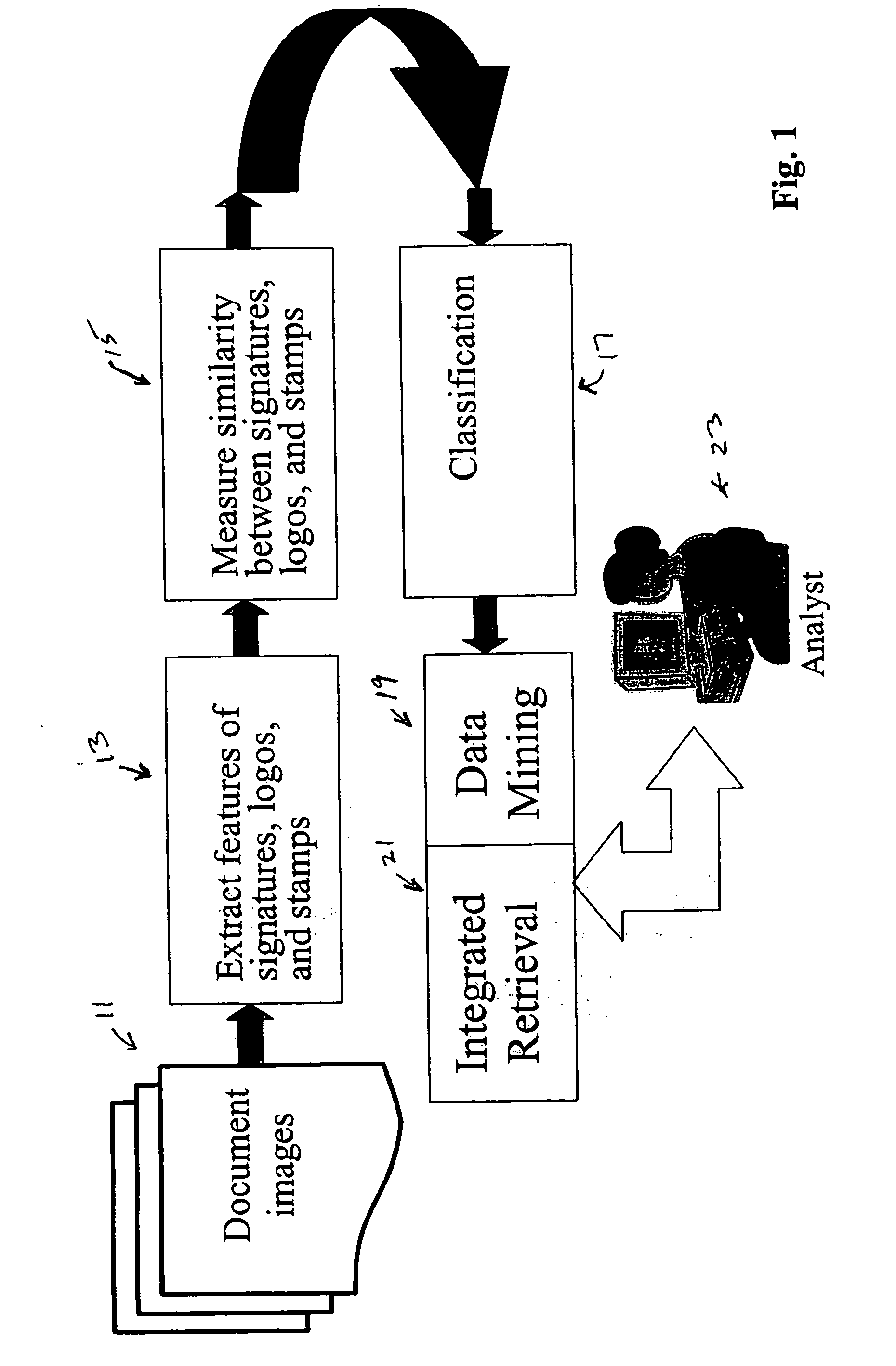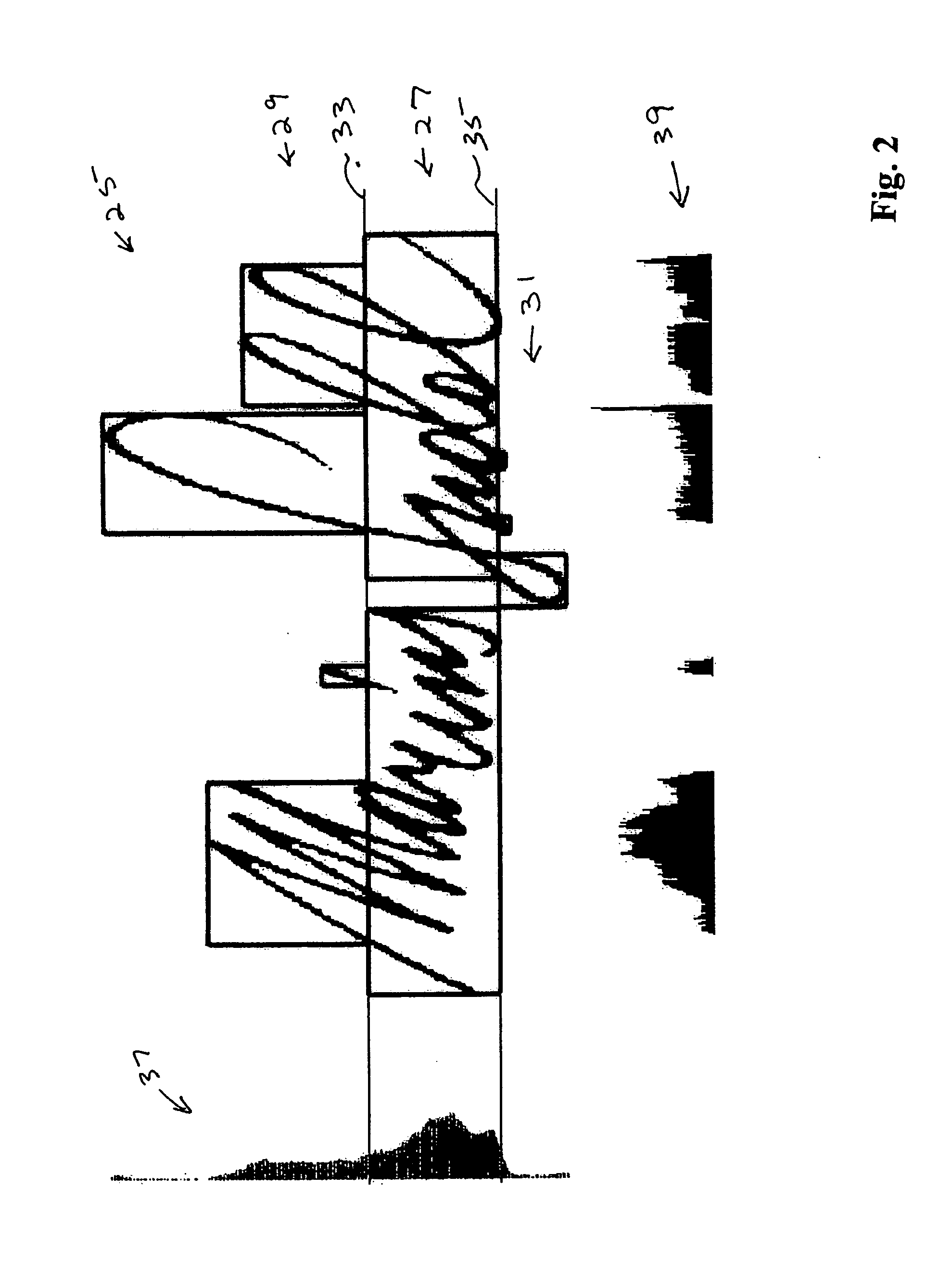[0009] The present invention provides means for meeting the above needs. The present invention is entirely
image based and is language independent. Embodiments of the present invention are designed to reduce the average complexity of the required image comparisons by performing a sequence of simple comparisons for the majority of the images, and complete comparisons for only a small subsets thereof.
[0010] A method according to the present invention may operate within digital
hardware software or
firmware or combinations thereof, for efficient image-based indexing and classification of documents in
digital image databases, and comprise the steps of selecting a representative image; quantifying features of the representative image; using a
training set of similar type images to automatically establish a hierarchy of classifier parameters to be used as feature comparators; quantifying features of images in the
database documents; and sorting the document image features using the established classifier parameters in cascaded comparisons to reduce a set of document images to an operably small set of candidate images for comparing to the representative image on a feature by feature basis.
[0011] As a general illustration, assume a database collection of e.g., one million digitized documents. The present invention uses cascaded comparisons for image classification, which may be suboptimal for exact
image identification, but is entirely operable within the context of the present invention to significantly reduce the time needed for image comparisons. In this approach, instead of performing complex and
time consuming similarity comparisons between a representative image and all the possible candidates in the database, as in the known art, the number of images which are candidates for retrieval is first reduced substantially using a cascaded sequence of efficient comparisons. Each comparison reduces the set of retrieval candidates until a small number L of candidates is obtained. Once the reduced set of candidates is obtained, accurate comparisons can proceed if desired according to the highly accurate but computationally expensive composite methods of the known art. Thus, instead of O(N×N) comparison operations, the present invention will employ only O(N×L) full comparisons where L<N.
[0016] The discriminating comparison parameter, or the
list or order of the discriminating comparison parameters throughout the cascaded comparisons, need not be chosen to merely eliminate the most documents on the first comparison operation, but may be biased based upon many factors, such as load balancing, number of categories, an
application specific selection that makes sense for a particular search query, etc. The person having ordinary skill in the art will appreciate that each successive comparison operation thus makes only 1 / n comparison operations, where n is the number of bins in the comparison criteria. Thus, the number of comparison operations involved in an
image based database search query according to the present invention is quickly reduced to a manageable level of operations, i.e., is computationally economical. For example, for a fifty-fifty / yes-no criteria, those candidates remaining after each operation are desirably one-half the number of the candidates in the previous comparison operation, assuming the identifying vector for each successive comparison operation is equally discriminating.
[0018] Embodiments of the present invention may thus provide a practical image-based classification of documents by pre-selecting candidates for a more intensive image comparison by using cascaded comparisons. In this way, the number of signatures that are needed to be compared using complex similarity measures is significantly reduced. Thus, a method of image-based classification of documents, and their retrieval, is made practical within real-time constraints for collections measuring in the millions of documents.
[0020] The approach of the present invention for indexing and classification in image databases enables a wide range of applications such as: retrieving documents from image databases based on the similarity of signatures and / or logos and / or stamps and / or spotted word or words to entities in a query document; determining the number of unique authors and / or organizations in image databases by clustering the data based on signatures and / or logos and / or stamps, and / or spotted word or words, and counting the number of clusters; determining the most frequent signer and / or organization in image databases to hint at authority level and organization importance by clustering the data based on signatures and / or logos and / or stamps, and / or spotted word or words, and determining the frequency of each signature and / or logo and / or stamp and / or spotted word or words; comparing a signature to a clustered group of signatures to detect forgery in image databases by clustering the data based on signatures, determining the corresponding cluster, and measuring the similarity between the query signature and each signature in the corresponding cluster; and determining the regularity of signatures of the same person in image databases to detect stamped signatures by clustering the data based on signatures and measuring the similarity within each cluster.
 Login to View More
Login to View More  Login to View More
Login to View More 


